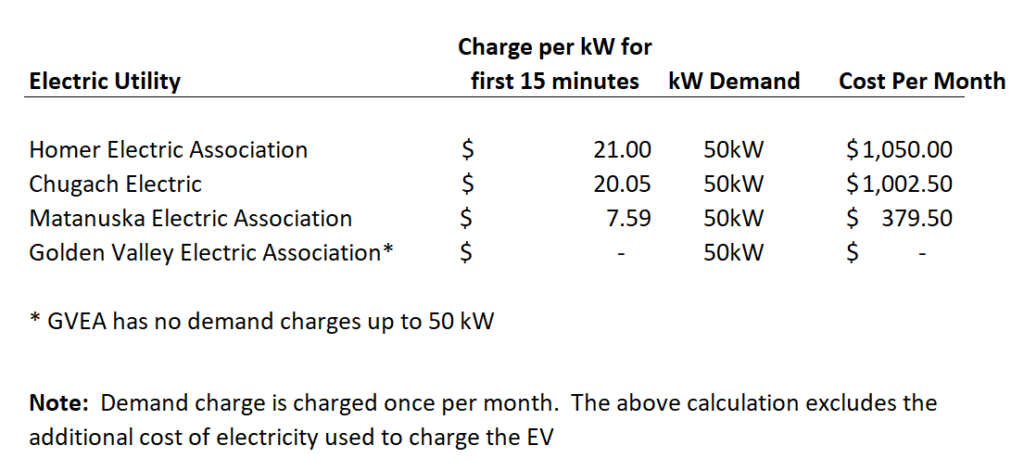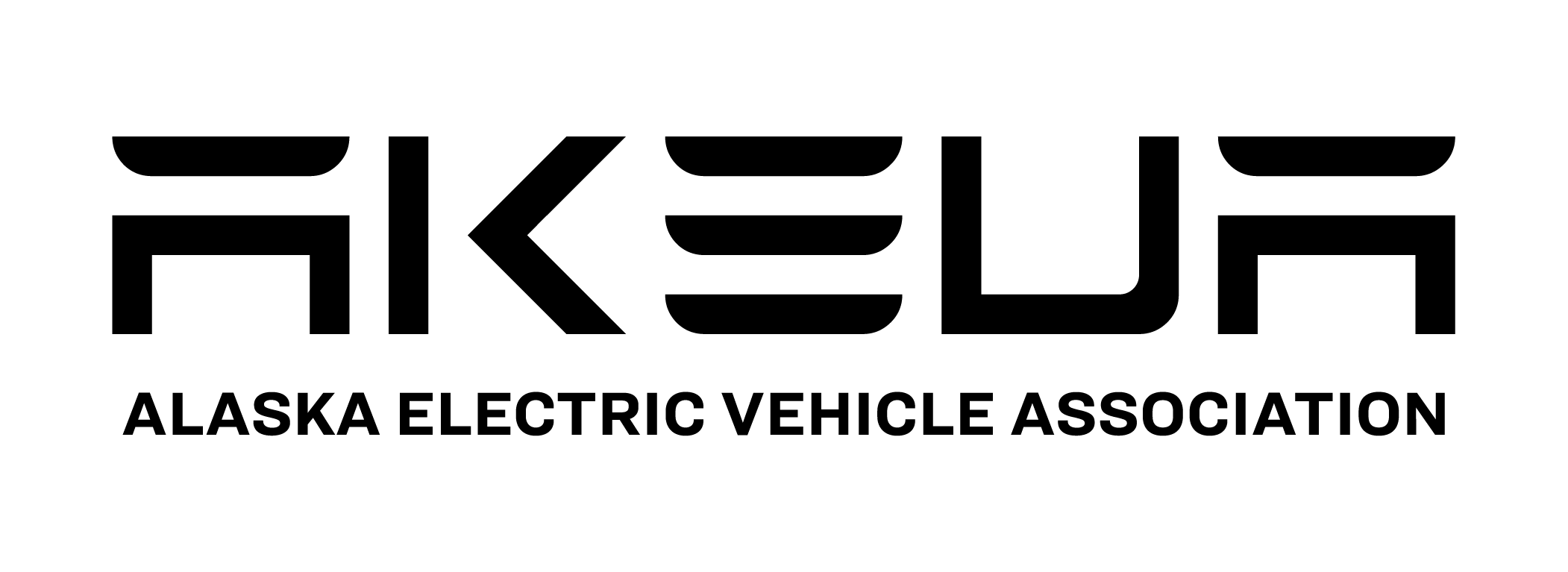Modern electric vehicles are made to drive long distances and recharge rapidly provided that the charging infrastructure is in place. In Alaska several obstacles exist that make long distance commuting time consuming and less efficient. Alaska with the exception of Juneau, does not have any fast charging stations. A fast charger (Level 3) can charge an electric vehicle from zero battery charge to 80% charge in 30 minutes, in comparison a destination charger (Level 2) requires 6 hours of charging to reach the same 80% charge. Fast charging is necessary to allow for long distance commuting, Anchorage to Fairbanks as an example.
The cost and installation of Level 3 chargers is significantly more expensive that Leve 2 chargers. Where a typical Level 2 charger can cost around $500 the Level 3 chargers can cost $50K to $100K excluding installation costs. The upfront cost of Level 3 chargers can be offset through grants and private initiatives. In Alaska, funding for Level 3 charger is available through the Alaska Energy Authority and the Volkswagen Diesel Settlement Grants.
A major fixed expense of Level 3 fast charging is the cost of electric utility demand charges. Level 3 chargers have to be connected to 3 phase power source and draw (demand) 50 kW to 100 kW upon an EV plugging into the charger. The electric utility demand rate fee structure can have a cost prohibitive affect on installation and continued operation of Level 3 chargers in Alaska. Below is an example of what it would cost for 15 minutes of Level 3 charging at 50 kW along the Railbelt for each Electric Utility (demand charges vary for each Electric Utility)

To remove the barriers to Level 3 fast charger installations in Alaska, electric utility companies should create Pilot Programs that remove demand charges from Level 3 charger installation. Further, Alaska Electric Vehicle Association supports the creation of a tariff through the Regulatory Commission of Alaska that makes operation of Level 3 fast chargers in Alaska less costly.

Here is an update with some more information about demand charge costs and feasibility along the Alcan. For a business hosting one 50 kW level 3 station to break-even on electricity cost, the amount of time an EV needs to be charging every day of the month at 30 cents per kWh ($15/hr) was calculated for various utilities:
Chugach: 2 hrs. 34 minutes
Homer: 2 hours 31 minutes
Copper Valley (Glennallen): 1 hour 34 minutes
PG & E (California): 26 minutes
AEL&P (Juneau): 1 minute 23 seconds
The reason for the large variation is the demand charge. This charge is around $20 per kW when a source draws an instantaneous demand for electricity of more than 20kW over a period of 15 minutes for three consecutive months. Homer and Chugach Electric Associations both have this type of charge. It costs money for larger wires and transformers to deliver that much power.
In Juneau however, level 3 charging is so cost-effective because AEL&P has only a flat monthly charge of $10. Juneau has the second-highest number of EVs per capita of any city in the US!
In Glennallen (CVEA) the demand charge is only $12 per kW.
In California, the demand charge for businesses that host EV charging stations on a separate meter is $95.56/month per 50 kW block, with a “subscription charge” of $1.91/kW. Costs can be ~$20 lower per month if the station is the “primary service voltage”, whatever that means.
Alcan Traffic Volume?
Therefore, at present rates for Copper Valley Electric Association, every day two to three EVS would need to be charging for an hour or so each in Glennallen, for example, to support a 50 kW fast-charger there. An hour of charge at 50 kW would be plenty for most EVs to easily reach Palmer from Glennallen in the summer (~140 miles). Some could reach Anchorage with that charge.
According to AK DOT, the average traffic on the remote portions of the Alcan and Glenn Highways between the Canadian border and Nelchina varies from about 150-1500 cars per day, depending on the month. In the US right now about 1 in every 240 cars on the road is an EV. However, EVs have increased to over 2% of US new car sales.
Taken together, these two statistics mean that somewhere between two and ten EVs per day would be traveling the remote portions of the Alcan and Glenn right now, if the charging infrastructure was there to support them. Therefore, traffic volume should be sufficient to economically support a level 3 charging station in Glennallen (and Tok?) right now. Trends show that the portion of EV sales is increasing. Yukon Territory is actively building a fast-charging network along the Alcan; Whitehorse and Carcross have stations- two per year are budgeted for. The only thing holding back EV traffic on the Alcan is the lack of a couple of fast-charging stations. Build it and they will come! Pioneering EV drivers from the lower 48 are already making the trip!